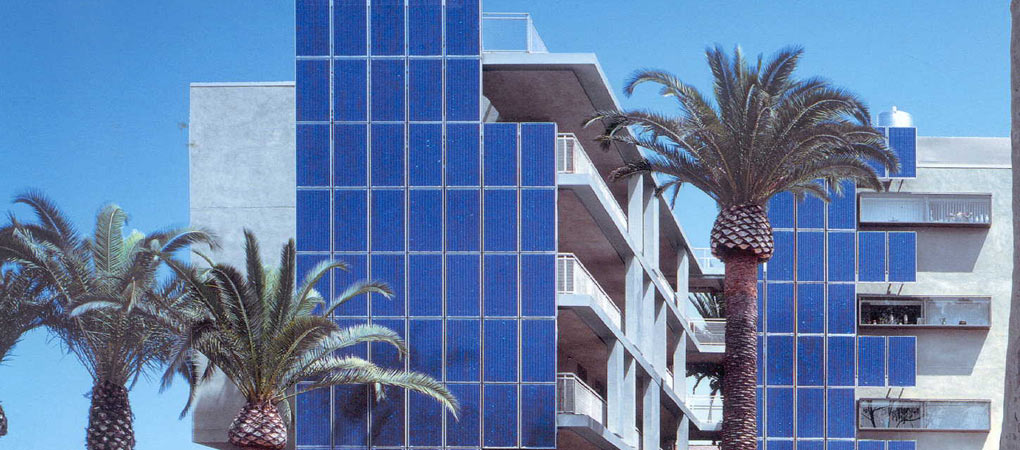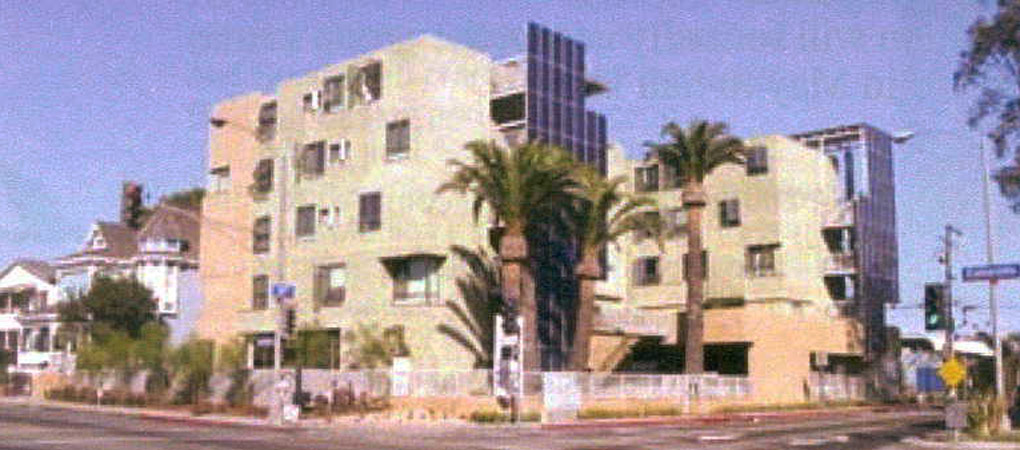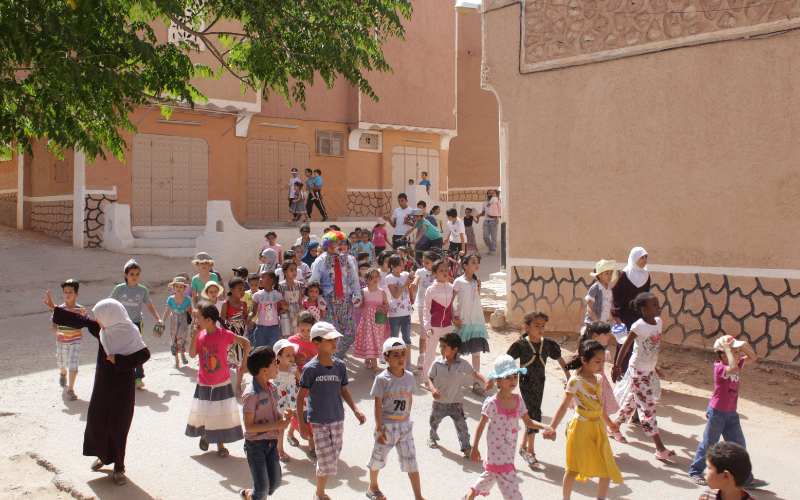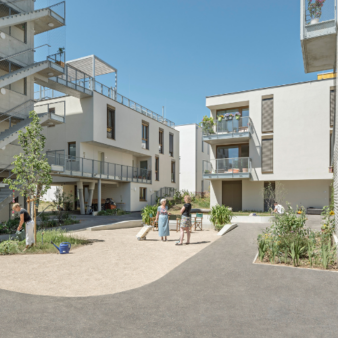One of the first energy-neutral buildings in the USA, this five-storey complex of 54 apartments provides affordable housing for key workers close to the Santa Monica city centre. Innovative energy technologies and construction materials, strict waste recycling and water conservation and management systems combine to make this a nationally recognised example of environmentally sustainable construction.
Project Description
Aims and Objectives
- To effectively utilize land by providing dense housing in an urban infill site next to transit.
- To make a significant contribution to the surrounding urban environment by bringing quality design to an affordable housing project located in the heart of a thriving commercial downtown.
- To provide valuable lessons on overcoming barriers to green development and showcase new technologies for other developers and builders.
- To provide an exceptional and promising model for private/public partnership that benefits the community.
- To influence governmental regulations and policy to facilitate energy and environmentally-efficient design.
- To seek out and secure broad exposure for the project through a variety of media -magazines, newspapers, news broadcasts, and other publications – in order to increase awareness and disseminate information.
- To implement and maintain a programme aimed at educating public and private developers, members of the local building industry, students and the general public by providing tours of the building, lectures, and assistance on research projects.
Founded in 1875, the city of Santa Monica is 16 miles west of downtown Los Angeles with a population of approximately 90,000 and a median income of $49,000. As is the case in southern California, Santa Monica is experiencing an intense housing crisis. Escalating prices and liberation of rent controls mean that few affordable housing units are now available and few new ones are being provided. In the three years of 1999-2001 only 434 affordable housing units were provided. The main housing problems to be overcome are a shortage of affordable housing for low income working households near their place of work in the city centre and the high levels of energy consumption in residential buildings with the resulting impact on the environment.
Colorado Court was designed in response to a request from the Santa Monica city that wished to provide affordable housing and have a green-building demonstration project.
The project aims to provide environmentally, socially responsible and affordable housing with the objective of helping to maintain socio-economic diversity in a highly desirable beach community with skyrocketing costs of living. It seeks to provide an exemplar model of sustainable living that exceeds conventional standards and practices and can serve as a demonstration project for future development.

Colorado Court is a 44-unit, 5-storey affordable housing project. It was completed and occupied in May 2002 and is located on a 13,549 ft2 prime downtown Santa Monica brownfield site. Total area of the project is 29,900, with each bed-sitting flat being approximately 375 ft2. Each flat has its own bathroom and a small kitchenette. Although the units are fairly small, the ceilings are 10 ft high and there is natural light and cross ventilation in each unit. Additional facilities provided by the project include a community room, mail room, outdoor courtyard space, bike store, laundry and covered car parking for 20 cars.
The project is designed to be completely energy neutral. It is covered on the roof and facade with 199 photovoltaic cells to meet most of its peak load electricity demand. The system has conversion efficiency in excess of 70 per cent compared to an average of less than 30 per cent. A natural gas powered micro-turbine and heat recovery system generate base-load electricity and hot water. There has been careful use of passive solar design technologies as well as a range of other state-of-the-art technologies.
The total cost of the project was $5.85million. Of this the total construction cost was $4,674,000 and the total soft costs were $1,176,000, i.e. a total of $132,000 per dwelling unit. Rental income per year is $190,872: the rents are between $337 and $386 per month and are affordable to workers earning $13,500 – $15,000 p.a. Over 20 per cent of the units are maintained as special needs housing. After all expenses of the project have been met there is a net annual operating income of £11,148, which after $6,841 debt service leaves an annual cash flow of $4,307.
Colorado Court has affected public policy at both the local and state levels. Politically it has set a model for public private partnerships and has successfully pressured the State of California’s Public Utilities Commission to increase the limit of net metering from 10kW to 100kW for renewable energy systems. It was also successful in persuading the State Tax Credit allocation Committee to support projects that incorporate environmentally friendly measures.
Why is it innovative?
- Colorado Court is one of the first buildings of its type in the USA that is 100 per cent energy neutral in that it is designed to produce as much energy as it uses.
- Innovative technologies used include a natural gas powered turbine / heat recovery system with 70 per cent conversion efficiency.
- Use of state-of-the-art construction materials and appliances.
- Strict waste recycling regulations for the contractor and use of recycled materials wherever possible.
What is the environmental impact?
Several of the strategies and policies developed for the project are unprecedented for this building type. These include the requirement on the contractor to comply with a strict waste recycling policy at the building site at all times and over 75 per cent of all construction waste was recycled. High energy efficiency standards ensure that low levels of energy need to be used. Environmentally sensible materials and appliances are featured throughout the project.
Water conservation and management are integral to sustainability at Colorado Court.
Is it financially sustainable?
The financially responsible aspect of the project enables low-income workers to have affordable accommodation near their place of work. The monthly rent ($337 – $386) is less than the average of $1,000 that such accommodation would normally command in this area of Santa Monica. And since there are no utility bills to pay households have more disposable income.
What is the social impact?
Colorado Court encourages community interaction both with its own residents and with the community at large. The Community Corporation of Santa Monica tailored Colorado Court to meet the needs of this tenant population, with advice of the social support organisations responsible for their care and support. This provides an opportunity for independent living. Careful design has also been used to increase security since there are security problems in the area.
Transfer
Many of the energy efficiency measures in Colorado Court are now being evaluated for all new construction projects in the Community Corporation of Santa Monica. A similar project is being designed for a new mixed use development of 48 units to be called Broadway Housing in Santa Monica. This will be occupied in 2005. 32 units of affordable family housing for a woman’s shelter in Pomona are being designed including many of the Colorado Court features and lessons learned. Private sector developers have also approached PSK to build 50 units of family market rate housing over retail uses in the downtown core.
Partnership
Private sector, local government



